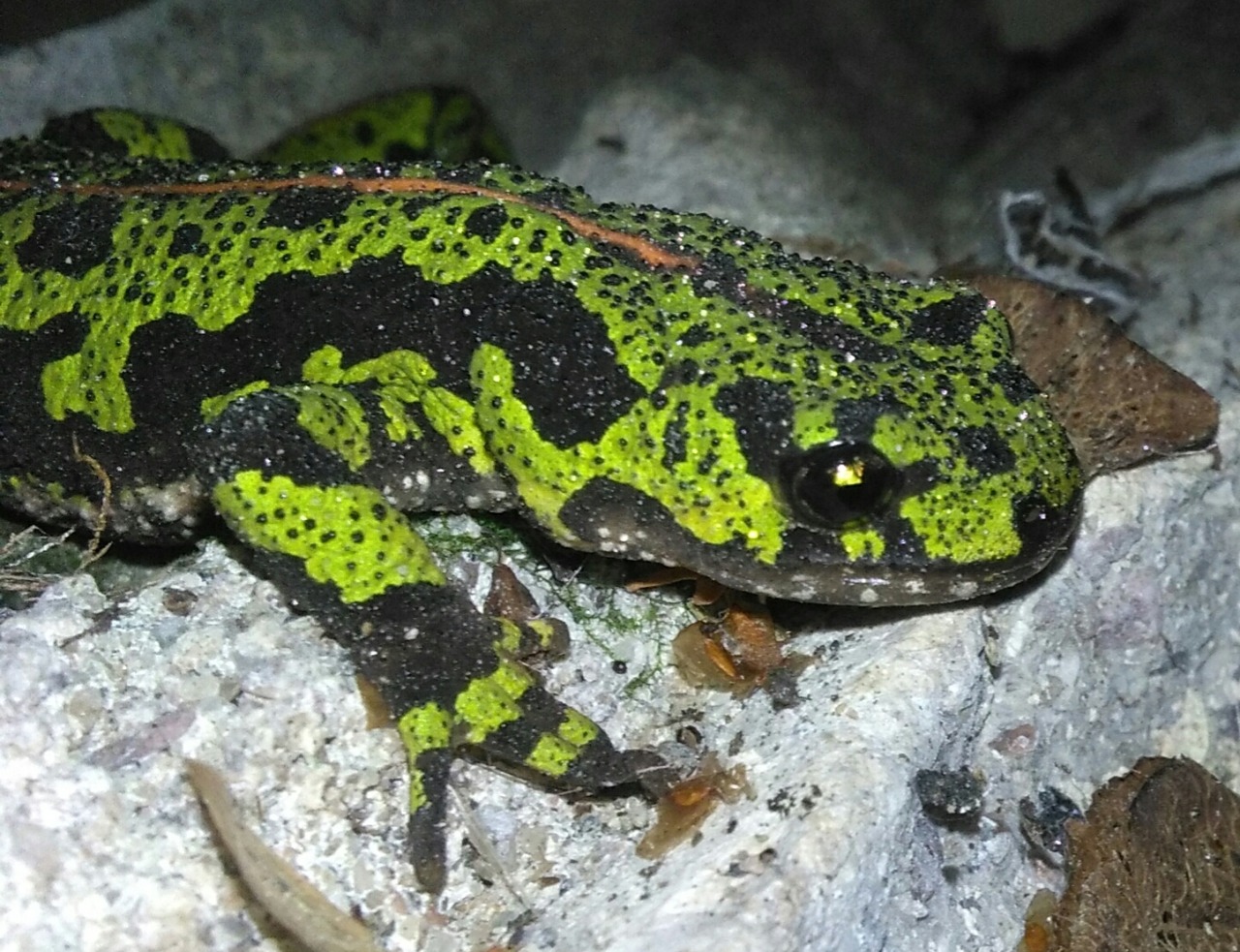Observation of the Week, 10/6/16

This Marbled Newt, seen in France by @blankplank21, is our Observation of the Week!
After hearing about iNaturalist from the story on NPR, Brian Gray says “I uninstalled Pokemon Go for [iNaturalist] and found myself going further and getting more excited about looking for creatures!” On a recent trip to visit his in-laws in France, Brian had a chance to explore their “beautiful warm home surrounded by lush greenery and some forestry,” and “Every free moment was spent on every bee, hornet or spider!...I found some other wonderful creatures that were really pleasant surprises but nothing so spectacular as this Marbled Newt!”
While exploring on a drizzly night, he found some Giant Toads and went on the prowl for more toad-friendly spots when he found several Marbled Newts. “It was my first time seeing a wild live newt...I took a couple of pictures and a short video then left them alone as they crept away, shunning the light of my phone's torch. I was really excited to take those pictures, I wanted to wake everybody in the house up! My parents-in-law are nature lovers too. That's a major bonding point with my father-in-law so I was quite keen to show him. I was also really keen to post it on iNaturalist.”
Marbled Newts are one of the largest newt species in France, with adults ranging from 5 inches (13 cm) to 6.5 inches (17 cm) in length. They range through much of western France and into parts of Spain and Portugal. Like many newts, they migrate to breeding pools during winter and spring (generally February to May), and during this time males grow impressive crests along their back and tail. During this “aquatic phase,” the warty protuberances on the backs of both males and females smooth out as well. Even when not breeding, males will have a small ridge along their back.

While Brian’s observation was taken in France, he resides in Oxford, England and was born and raised in Nairobi, Kenya. Growing up in Nairobi, he was always fascinated by nature, saying “We still have troops of monkeys (of different types: Vervet, Colobus, Sykes', etc) that pass through neighbourhoods stirring commotion as they proceed. Or the large Marabou Storks that patrol the city dump sites which are as much a fixture of the city as the people. Nature, animals in particular are the points of association with regards to my home country.”
Looking for wildlife has long been one of his hobbies, but Brian believes that using iNaturalist has made him even more passionate and aware of life around him. “Honestly, I wouldn't have found those newts if it wasn't for the pull I felt towards contributing to iNat,” he says. “I really was excited to add that observation and I'm over the moon that iNat and others are getting excited about it as well...it makes you appreciate the organisms you encounter and approach them with more intrigue, level of fascination skyrockets and you value every living thing in your surroundings.”
- by Tony Iwane
- All newts are salamanders, but not all salamanders are newts. Here’s an explainer.
- Here’s some video showing two Marbled Newts courting. You can definitely see the huge sexual dimorphism.





Comentários
LOVE this.
Adicionar um Comentário